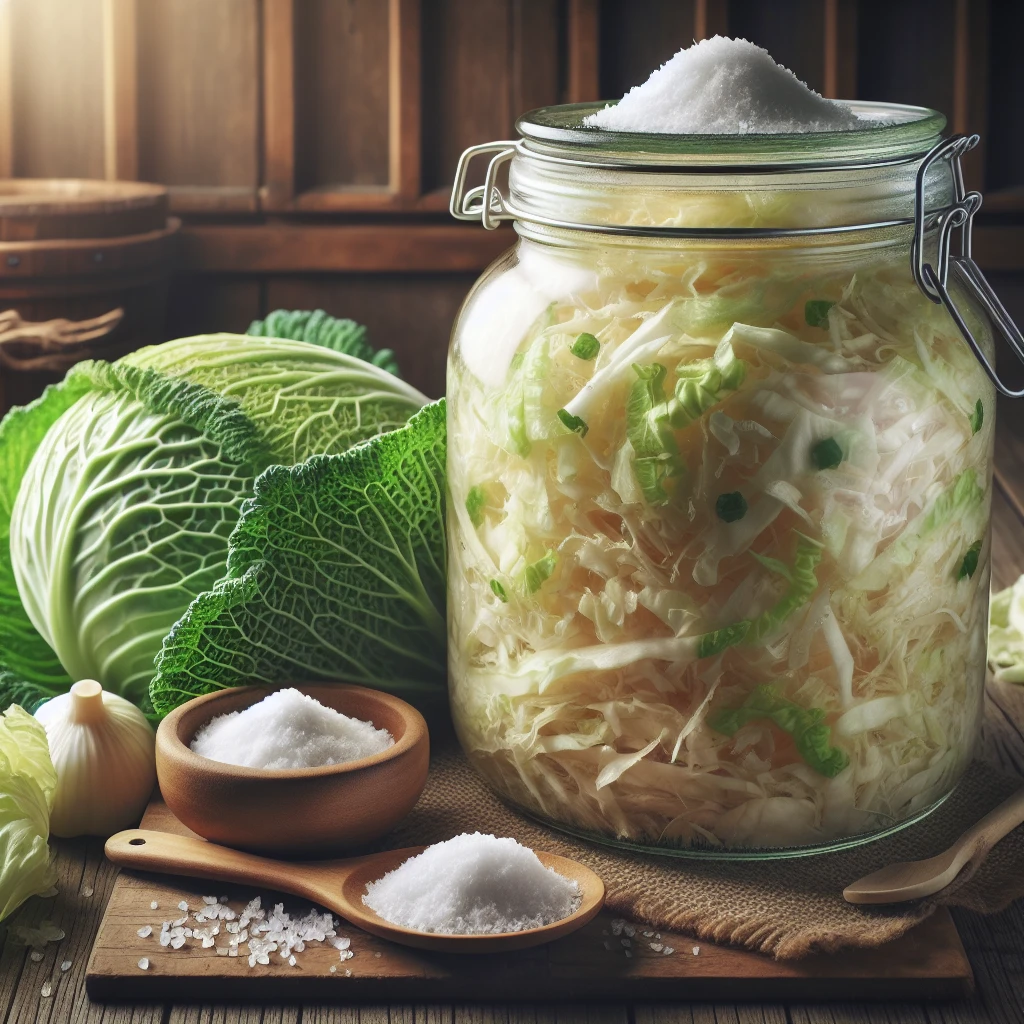
Homemade sauerkraut is a classic, tangy delight that brings out the best in fermented foods. This simple recipe requires just three ingredients and a little patience to transform humble cabbage into a flavorful, probiotic-rich condiment.
Cabbage serves as the base and main ingredient. It ferments beautifully, developing a delightful tangy flavor over time. Choose a fresh, firm green cabbage for the best results.
Kosher salt is essential for the fermentation process. It draws out water from the cabbage, creating a brine that facilitates fermentation and ensures the kraut stays submerged, preventing spoilage.
Caraway seeds (optional) add a hint of earthy, aromatic flavor that complements the tang of the sauerkraut, giving it a traditional touch.
Serve homemade sauerkraut alongside grilled sausages or bratwurst for a classic pairing. It also makes a delightful topping for hot dogs and sandwiches, adding a tangy crunch. Try mixing it into salads or using it as a savory garnish for soups.
Start by removing the outer leaves of the cabbage and setting them aside; they’ll come in handy later. Cut the cabbage into quarters and carefully remove the core from each quarter. Slice the cabbage finely, aiming for thin, even strips, and transfer them to a large mixing bowl.
Next, sprinkle the kosher salt over the cabbage. Now comes the hands-on part: mix the cabbage and salt thoroughly with your hands, squeezing as you go. This helps to release the juices from the cabbage, which is key for forming the brine. Let this mixture sit for about 15 minutes so the salt can continue to draw out more moisture.
If you’re using caraway seeds, now’s the time to add them to the bowl. Mix them in evenly. Then, pack the cabbage tightly into a clean glass jar. Press it down firmly with a spoon or your fist to ensure the cabbage is submerged under its liquid. This is crucial to kickstart the fermentation process.
Cover the jar with a cloth and secure it with a rubber band. This allows air to escape while keeping dust and other particles out. Place the jar at room temperature and let it ferment for 1 to 4 weeks, depending on your desired level of tanginess. Check daily to ensure the cabbage remains submerged in its liquid, pressing it down if needed.
Taste the sauerkraut periodically. As soon as it has reached your preferred level of tang, transfer the jar to the refrigerator to slow down the fermentation process.